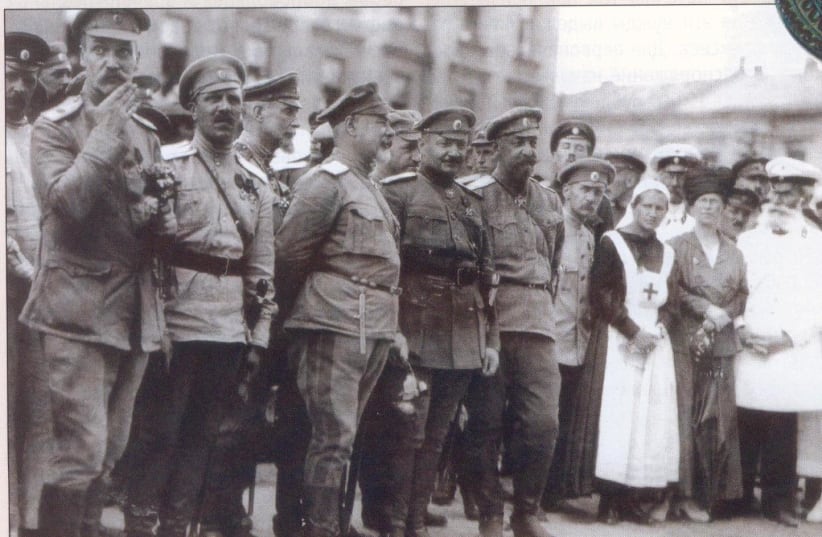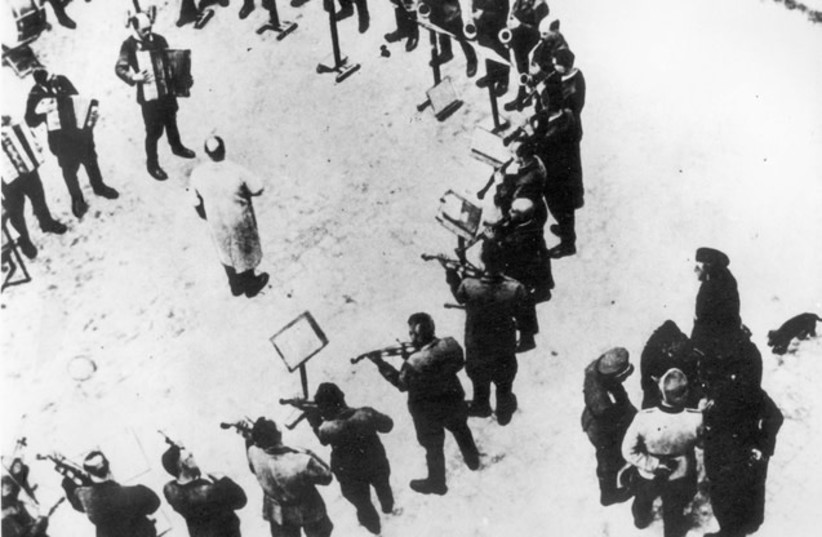On December 16, 1920, a detailed report on Ukraine pogroms – a Memorandum on the Massacres of Jews in the Ukraine – was submitted to the League of Nations detailing the massacre of Jews in more than 400 pogroms. Submitted by the Committee of Jewish Delegation representing the Jewish populations of 22 countries, the memorandum appealed to the League of Nations to obtain justice for the most terrible crimes that history had ever witnessed.
It included a September 1919 report of the Red Cross Society at Kiev (Kyiv) stating that more than 30,000 Jews have been murdered. Since that date, the number of murders had increased alarmingly. Jewish representatives from Ukraine unanimously declared that the number of Jews massacred far exceeded 100,000. It reported that “up to the present, more than a million Jews have been robbed and many of them have literally had their last shirt taken from them. The most refined tortures have been devised. Old men and children have been cut to pieces. Thousands of women and young girls have been abused, and among these even little girls and old women. The victims have been terribly mutilated; the right arm and left leg have been cut off, or vice versa, the left arm and right leg; one eye has been torn out and the nose cut off. The houses in which the Jews took refuge were burnt, and all perished in the flames. The number of cases in which these unhappy victims were doomed to die a slow death of indescribable torture cannot be counted. Burning was the usual practice.
“Besides physical torture, they were subjected to mental torture of a kind for which there is no parallel in history. Jews were compelled to dance and to sing in the presence of their torturers, to mock their own people and to praise their executioners; they had to dig their own graves and to commit shameful acts for the amusement of their murderers. These wretched people were forced to look on at the dishonoring of their daughters and of their wives, and children were compelled to hang their fathers.”
In January 1921, British chief rabbi Dr. Joseph Hertz declared that “1,000,000 human beings had been butchered and that for three years 3,000,000 persons in Ukraine had been forced ‘to pass through the horrors of hell.’ As a result, there were some 600,000 homeless children, 150,000 orphans and 35,000 double orphans in Ukraine who would die from cold, hunger, or disease unless Jewish hearts remained human and came to their rescue.”
News of these pogroms shocked Jews around the world and galvanized them into action: to raise funds and save their brethren. Sadly, there is no memorial day to remember these events nor are there contemporary efforts to teach this history.
This article attempts to tell of this forgotten part of Jewish history, a period completely overshadowed by the Nazi Holocaust: the horrors of war and pogroms and starvation and disease suffered by Jews in the “Pale of Settlement‟ from 1914 to 1922. It tells of the horrors and the help given to these desperate people by Jewish communities established in the US, Canada, Palestine and South Africa. Many of the details were covered up by the Soviets and are unknown, and so capturing this history is important. Sadly, it was followed by the Shoah 20 years later.
Horror of Horrors
The pogroms in Ukraine perpetrated mainly by the soldiers of Ukrainian leader Symon Petlura were in fact only part of the horrors. This is apparent when one looks at the causes of death of the parents of the orphans that were saved and transported to South Africa. The horrors commenced in 1914 with World War I, which heralded the forced relocation into Russia by the Czar’s uncle of Lithuanian and Latvian Jews.
In the fighting between the Germans and Russians, many townsfolk were killed and left homeless as frontline towns were attacked and destroyed. Jews fought in both the German and Russian armies.
World War 1 was followed by the 1917 Russian Revolution; the Spanish influenza epidemic of 1918-1919, the Polish fight for independence; wholesale pogroms perpetrated by the troops of White Russian General Anton Ivanovich Denikin, Ukrainian “hero‟ Symon Petlura and Belarusian short-time president Stanisław Bułak-Bałachowicz; man-made famine in 1921 in the Ukraine and hunger and starvation and diseases. Finally, complete chaos, devastation, crop failure, starvation and the diseases that accompany hunger and cold added to the extremely harsh living conditions that continued well into the 1920s.
Help!
Jewish communities around the world were shocked by the news of the horrors of war and the pogroms suffered by their Jewish relatives in the Pale of Settlement. Especially horrific were accounts of wholesale rape, extortion and slaughter of their brethren by Polish, Ukrainian and Belarus nationalistic armies and the Red and White (Cossack) Russian troops. The Jewish communities around the world heard the cries of their brethren whom they helped in many ways.
• The American Jewish Joint Distribution Committee (JDC) entered into an agreement with the American Relief Administration, and their feeding programs fed almost two million Ukrainians on a non-sectarian basis. The JDC also supported many Jewish communities in the Pale.
• Canada rescued 150 orphans, mainly from the Rovno area. They examined over 8,000 to find healthy ones that were transported to Toronto for adoption.
• South Africa sent funds and supplies to Poland and Ukraine, transported children to Kfar Yeladim in Israel and supported them there. They also rescued 177 orphans, collecting them mainly from orphanages supported by the JDC.
The Rescue of Orphans
On August 20, 1921, 108 Polish Ukrainian Jewish Orphans landed in Quebec aboard the SS Scandanavia. These were part of the 150 children selected and rescued by Harry Hirshman, the representative of the Canadian Jewish community.
On the other side of the world, on September 21, 1921, 181 Ukrainian war and pogrom orphans landed in Cape Town aboard the Edinburgh Castle. This group, now called The Ochberg Orphans, were selected and brought out by Isaac Ochberg, representative of the South African Jewish Community. (Half these children were placed in the care of The South African Jewish Orphanage, now called Arcadia Children‟s Home, in Johannesburg, and the other in The Cape Town Jewish Orphanage, now called Oranjia.)
The Canadian and South African governments had both agreed to allow in up to 200 orphans, subject to many conditions, including that the children be healthy. Ochberg selected healthy children from orphanages that had been established by the JDC, however, the children destined for Canada were selected from the Rovno area. Over 8,000 children were examined, but only about 150 healthy children could be found, and there were only a handful of children under the age of six who were sought by prospective adoptees. Hunger and starvation were everywhere, and some children were maimed and crippled from the effects of pogroms.
Pinsker Orphans
Pinsk was a larger town in The Pale of Settlement with three orphanages. During WWI, Pinsk was on the front line in the fighting between Germans and Russians, and the city was frequently bombarded resulting in loss of life and destruction of property. Three Pinsker Orphanages were established by locals Alter Bobrow, Elijohu Holtzman and Ze‟ev Lev, with the help of the JDC to house the many children left without parents. The JDC not only supported the Pinsk Jewish Community, including the three Pinsker Orphanages, but also supported many hundreds of Jewish communities throughout the Pale of Settlement, with their orphanages, hospitals, schools, old-age homes, soup kitchens, feeding programs and agricultural development, and other programs. Alter Bobrow helped save the children, and he together with his comrades looked after them and helped establish the three orphanages in Pinsk in 1917. In 1921, Alter accompanied Isaac Ochberg with the 181 Ochberg Orphans selected from orphanages in the Pale, including 44 from the Pinsk orphanages, to South Africa. ■
The writer compiled two books, The Ochberg Orphans and The Pinsker Orphans, on which he based this article. He can be reached at sedsand@iinet.net.au

